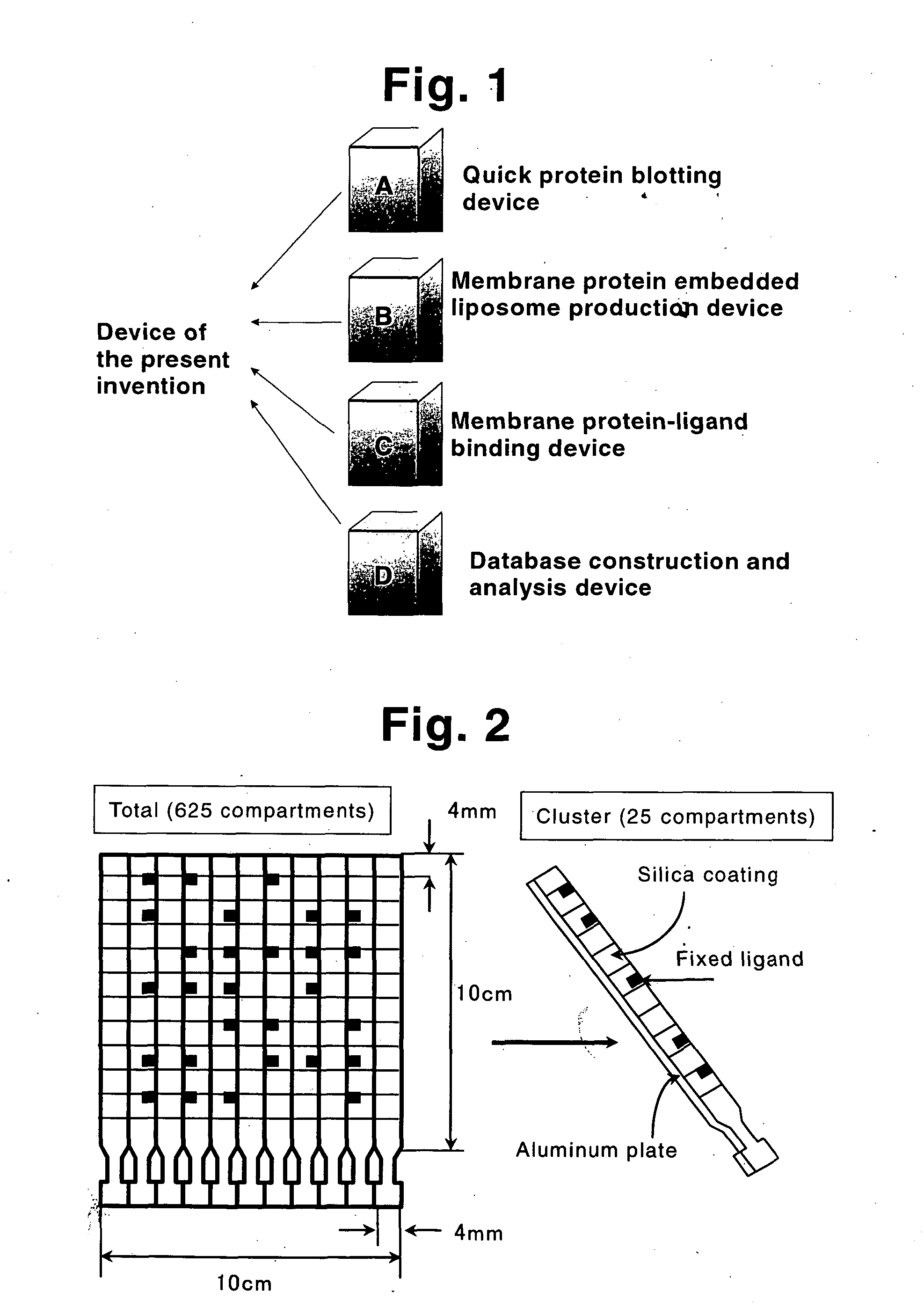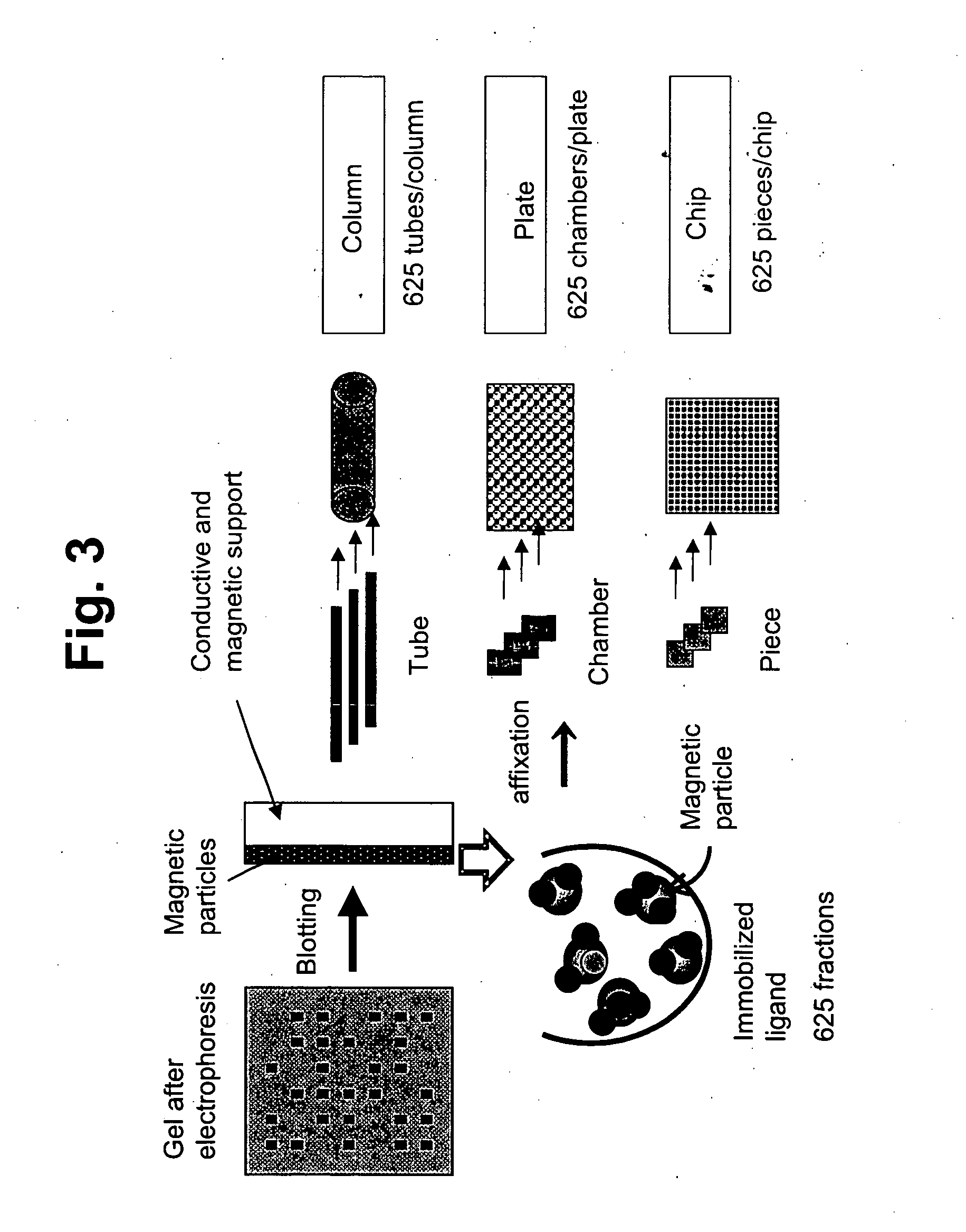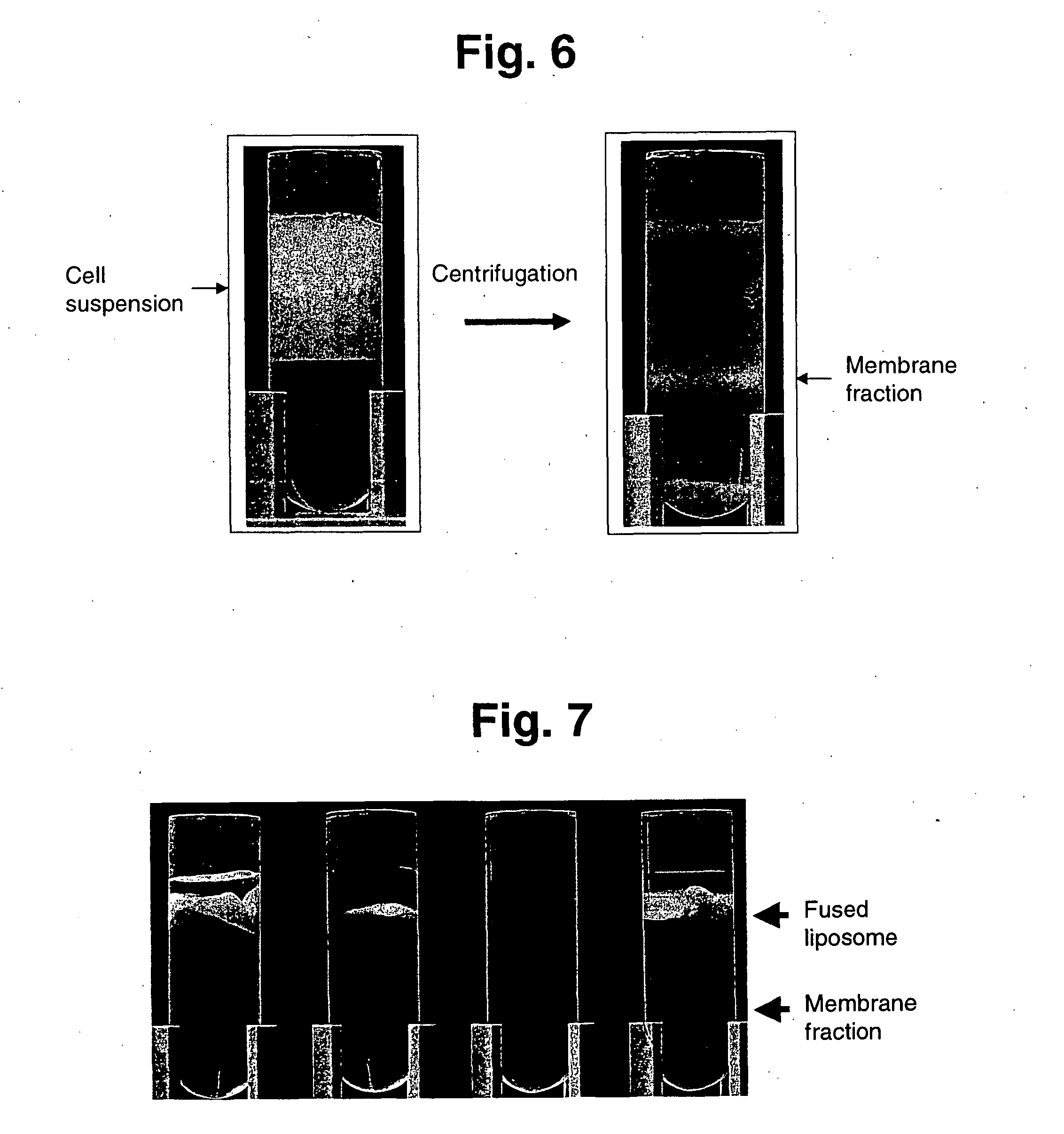Membrane protein library for proteome analysis and method for preparing same
a proteome and protein library technology, applied in the field of functional proteomics methods, techniques and devices, can solve the problems of inability to predict biogenic activity, delay the research of membrane-associated proteins, and inability to directly analyze proteomics that deals with objects affluent in diversity
- Summary
- Abstract
- Description
- Claims
- Application Information
AI Technical Summary
Benefits of technology
Problems solved by technology
Method used
Image
Examples
reference example 1
Confirmation of Expression of Three Kinds of Receptors
Before and after Bt2cAMP stimulation, U937 cells were respectively reacted with three kinds of ligands prelabeled with FITC and analyzed by FACS to observe presence of expression of the receptor. As a result, expression of the all three kinds of the receptors was observed as shown in FIG. 5.
example 1
Preparation of Urokinase Receptor-Embedded Liposome
(1) Preparation of Membrane Fraction
Because U937 is a cell line derived from human monocyte, and expresses a urokinase receptor at high concentration by phorbolester (PMA) stimulation, it was used as a sample for separation of a membrane fraction. After washing, the cells were ruptured by Polytron under ice-cooling for 2-5 sec ×3 times at 1 min intervals, and the membrane fraction was accumulated on the interface by 40% sucrose density gradient centrifugation (95,000 g ×60 min)(FIG. 6).
(2) Preparation of Membrane Protein-Embedded Liposome
Purified yolk lecithin (1.25 g) and cholesterol (0.125 g) were suspended in 25 mL of physiological saline, and treated in a probe type ultrasonication device for 15 min under ice-cooling. The obtained liposome has an average particle diameter of 80 nm. The U937 membrane fraction prepared in advance was added to this liposome solution and freeze and thaw was repeated 3 times at −80° C. and ro...
example 2
Appearance of Receptor Embedded Liposome After Decrease in Particle Diameter
The particle size of the membrane protein-embedded liposome was changed by an extruder method and the appearance of the urokinase receptor embedded liposome was examined with a fluorescent (FITC)-labeled urokinase. As a result, the number of the liposomes with the objective receptor embedded clearly increased in a liposome solution passed through a filter having a filtered pore size of not more than 0.6 μm, as shown in FIG. 16. It is postulated that this was caused by the fact that most of the objective receptors were enclosed inside a large liposome in the multi-layered liposome immediately after fusion and the fluorescence was not detected, and more importantly, a smaller liposome size decreased the number of receptors embedded in one liposome, thereby drawing rigid distinction between the liposomes with the objective receptor embedded and the liposomes without the objective receptor embedded, and the nu...
PUM
| Property | Measurement | Unit |
|---|---|---|
| Mass | aaaaa | aaaaa |
| Mass | aaaaa | aaaaa |
| Mass | aaaaa | aaaaa |
Abstract
Description
Claims
Application Information
 Login to View More
Login to View More - R&D
- Intellectual Property
- Life Sciences
- Materials
- Tech Scout
- Unparalleled Data Quality
- Higher Quality Content
- 60% Fewer Hallucinations
Browse by: Latest US Patents, China's latest patents, Technical Efficacy Thesaurus, Application Domain, Technology Topic, Popular Technical Reports.
© 2025 PatSnap. All rights reserved.Legal|Privacy policy|Modern Slavery Act Transparency Statement|Sitemap|About US| Contact US: help@patsnap.com



